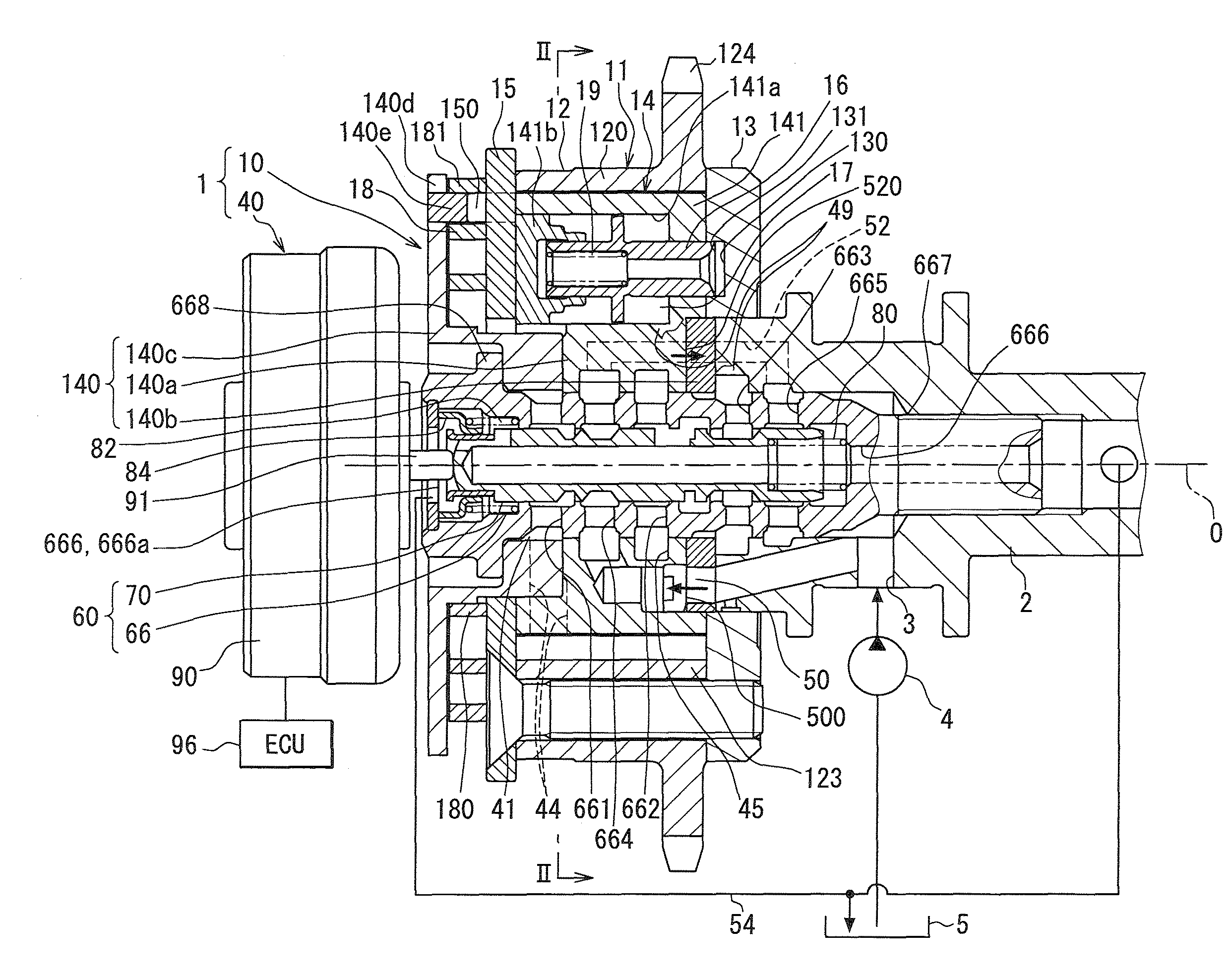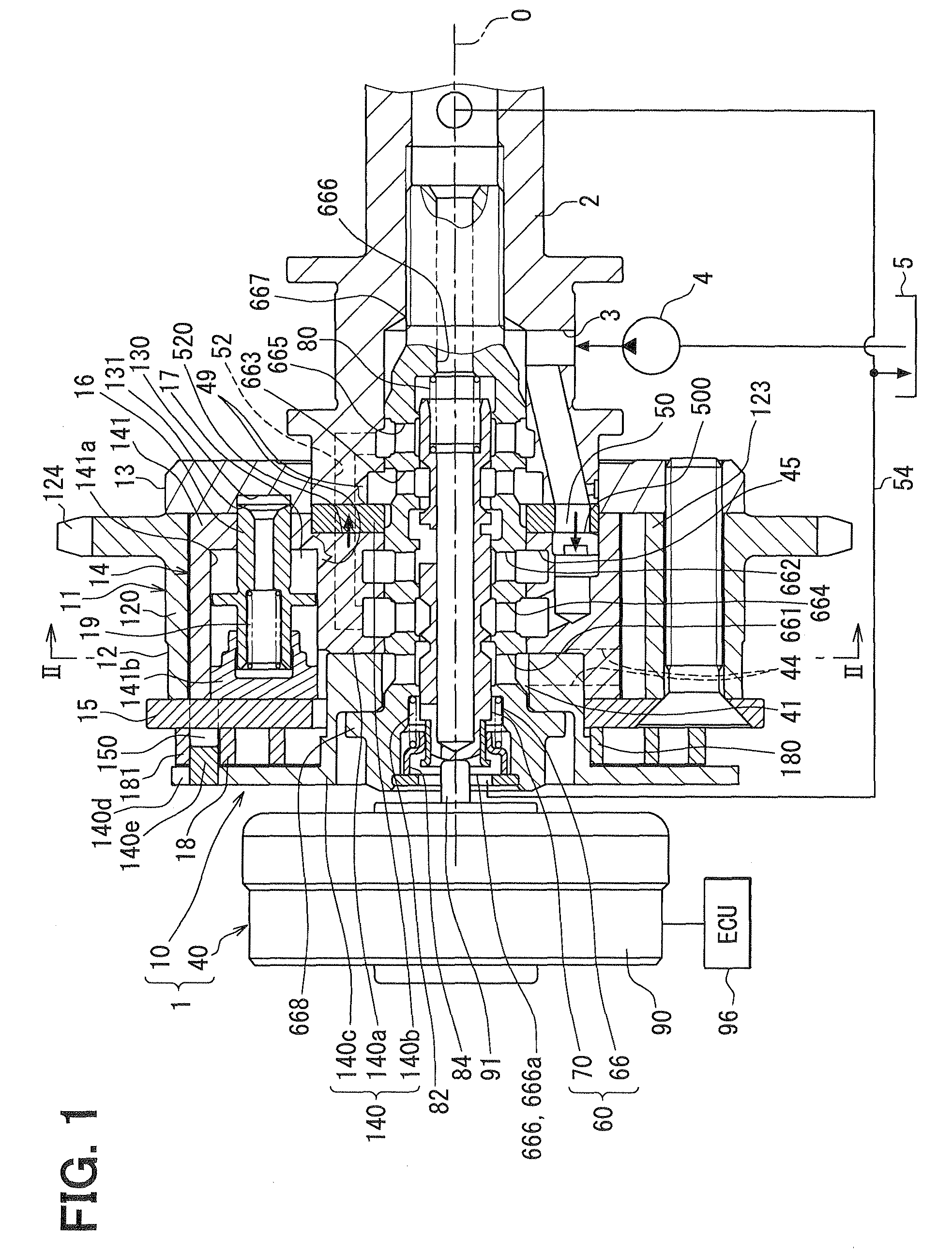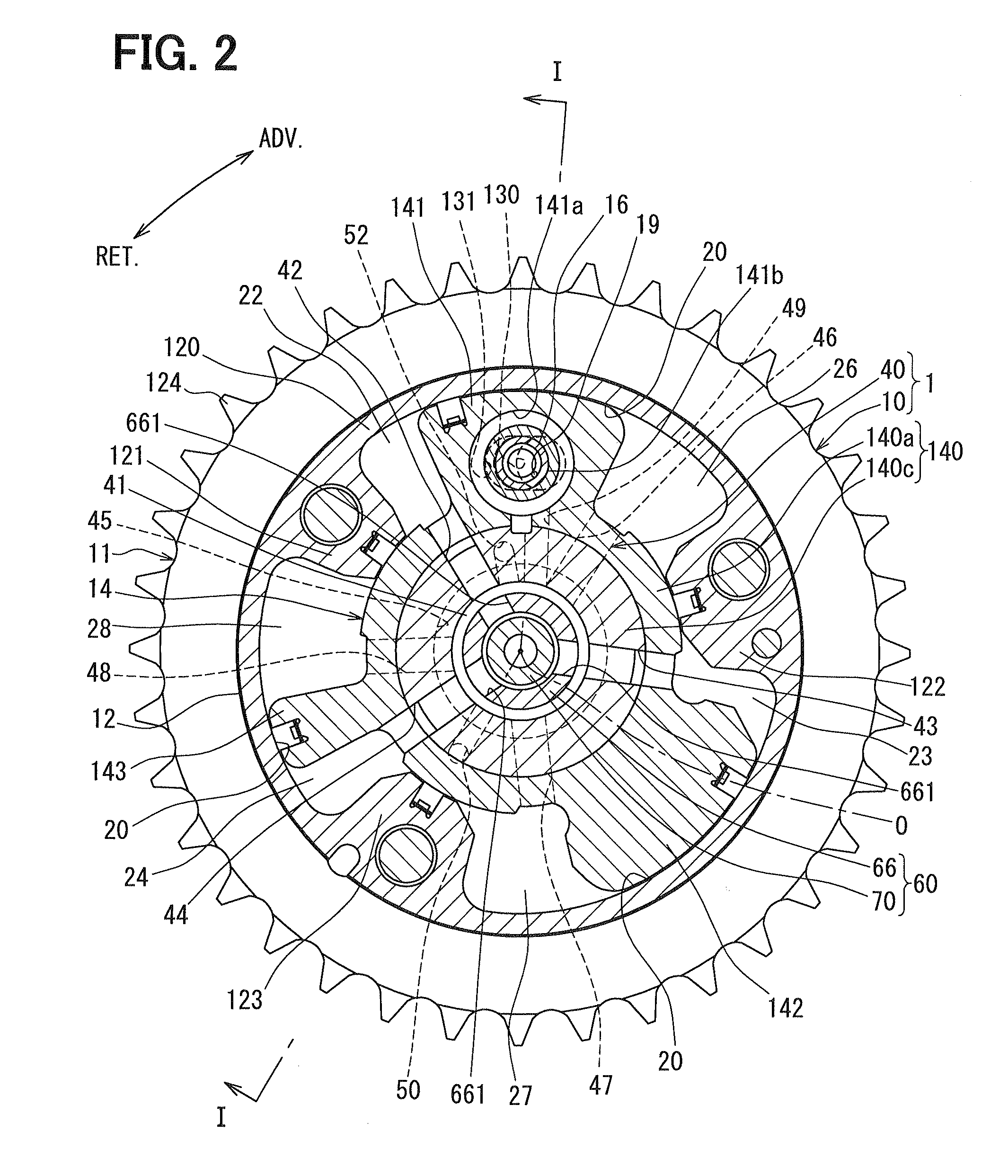Variable valve timing device
a timing device and variable valve technology, applied in valve arrangements, mechanical equipment, machines/engines, etc., can solve the problems of hysteresis adversely affecting the response characteristic of the control valve, etc., to reduce hysteresis, reduce side force, and small resistance
- Summary
- Abstract
- Description
- Claims
- Application Information
AI Technical Summary
Benefits of technology
Problems solved by technology
Method used
Image
Examples
first embodiment
[0039]FIG. 1 shows a first embodiment in which a variable valve timing device 1 is applied to an internal combustion engine for a vehicle. The variable valve timing device 1 is a fluid driven type which uses oil as hydraulic fluid, and adjusts valve timing of an inlet valve assumed as a valve.
[0040](Basic Components)
[0041]First, the basic components of the variable valve timing device 1 are explained. As shown in FIGS. 1 and 2, the variable valve timing device 1 includes a rotary-mechanism part 10 and a control part 40. The rotary-mechanism part 10 is disposed in a transmission system which transmits an engine torque outputted from a crankshaft (not shown) to the cam shaft 2 in the internal combustion engine. The control part 40 controls in-flow and out-flow of the hydraulic oil for driving the rotary-mechanism part 10.
[0042](Rotary Mechanism Part)
[0043]In the rotary-mechanism part 10, the housing 11 is formed by placing and tightening a rear plate 13 and a front plate 15 on both ax...
second embodiment
[0116]As shown in FIG. 13, the second embodiment is a modification of the first embodiment.
[0117](Drive Mechanism)
[0118]Hereafter, components of a control valve 260 in the second embodiment that are different from the first embodiment are mainly explained. As shown in FIGS. 13-17, the biasing device includes a first resilient member 80 and a second resilient member 282. The second resilient member 282 made of a metal compression coil spring is coaxially accommodated in the drain port 666a of the sleeve 266 disposed within the rotary components 2, 14. The second resilient member 82 is deformed by compressing it by disposing it between the stopper 660 fixed on the drain port 666a and the movable member 284. Thereby, the second resilient member 282 generates a second restoring force F2 which pushes and biases the movable member 284 in the axial forward direction Dg. The second resilient member 82 generates the second restoring force F2 for pushing the movable member 284 in the axial di...
PUM
 Login to View More
Login to View More Abstract
Description
Claims
Application Information
 Login to View More
Login to View More - R&D
- Intellectual Property
- Life Sciences
- Materials
- Tech Scout
- Unparalleled Data Quality
- Higher Quality Content
- 60% Fewer Hallucinations
Browse by: Latest US Patents, China's latest patents, Technical Efficacy Thesaurus, Application Domain, Technology Topic, Popular Technical Reports.
© 2025 PatSnap. All rights reserved.Legal|Privacy policy|Modern Slavery Act Transparency Statement|Sitemap|About US| Contact US: help@patsnap.com



